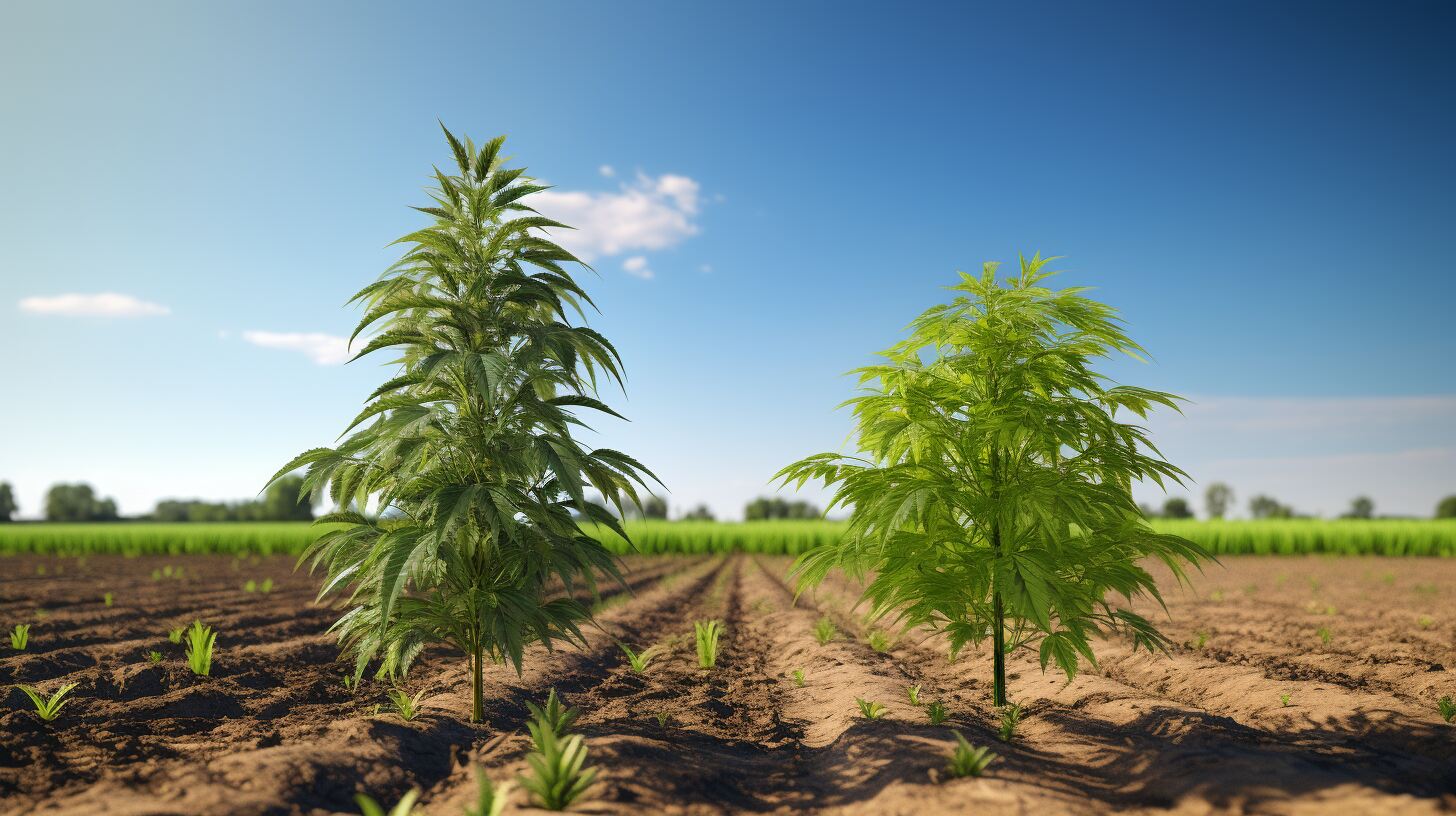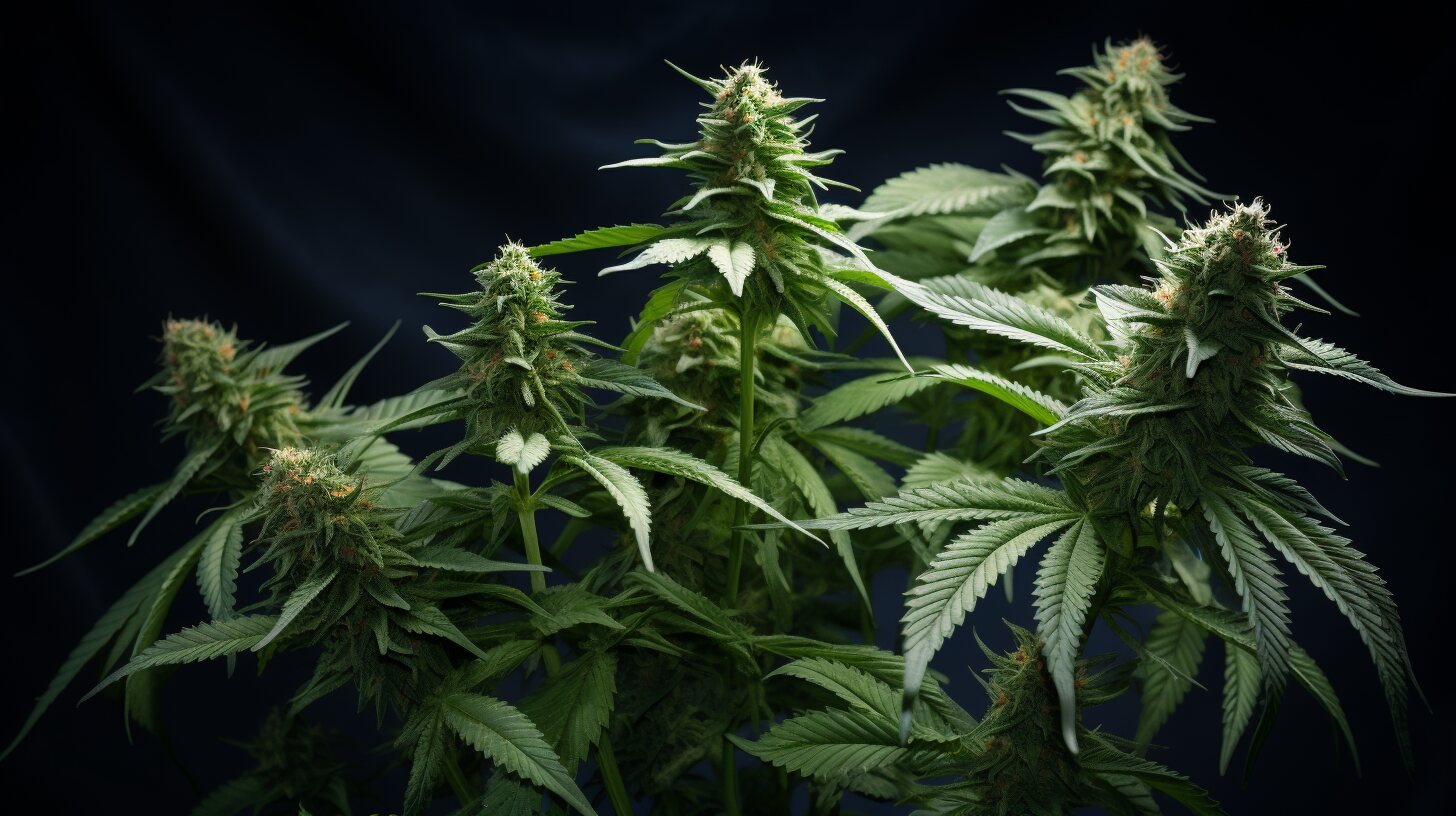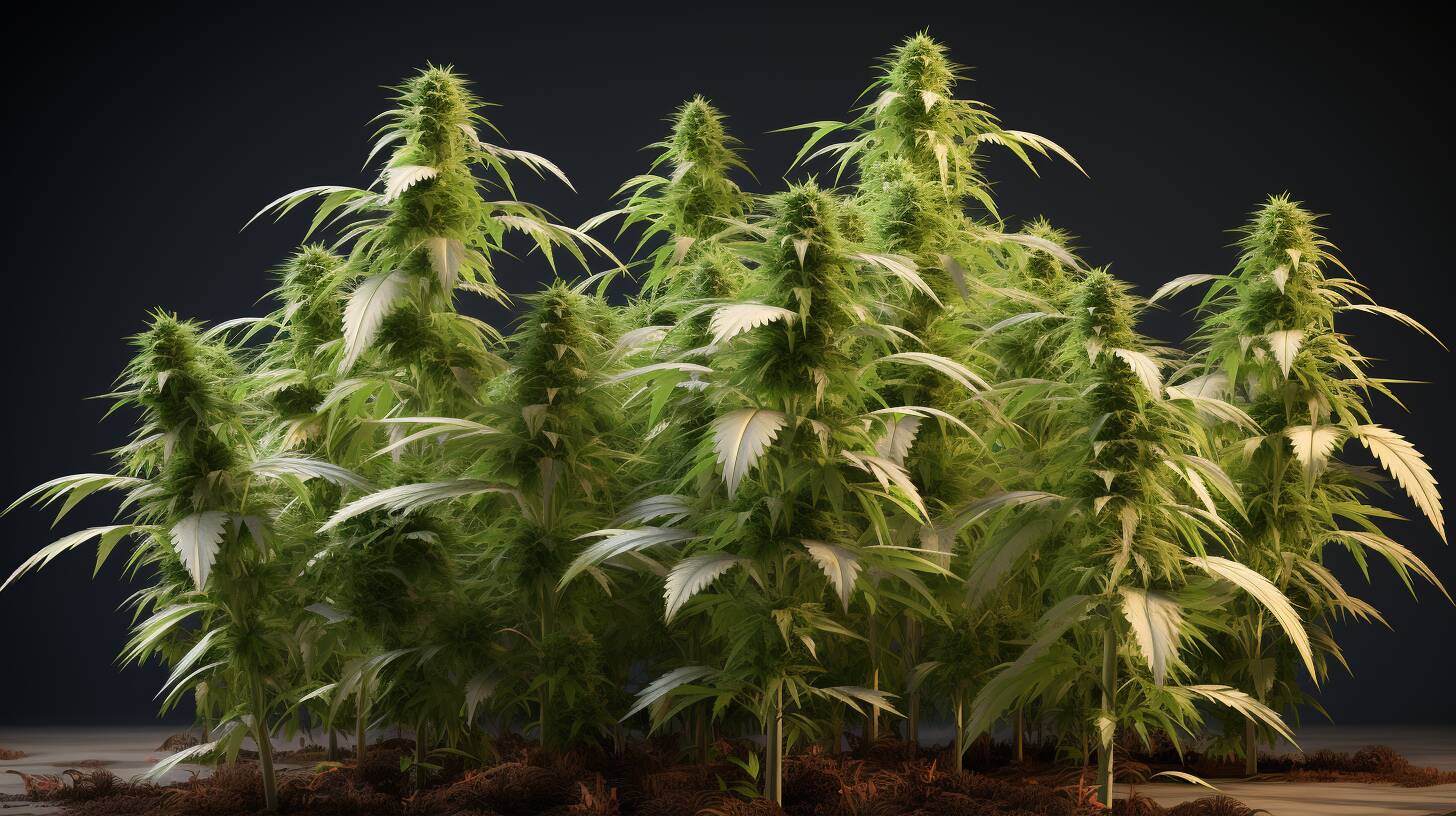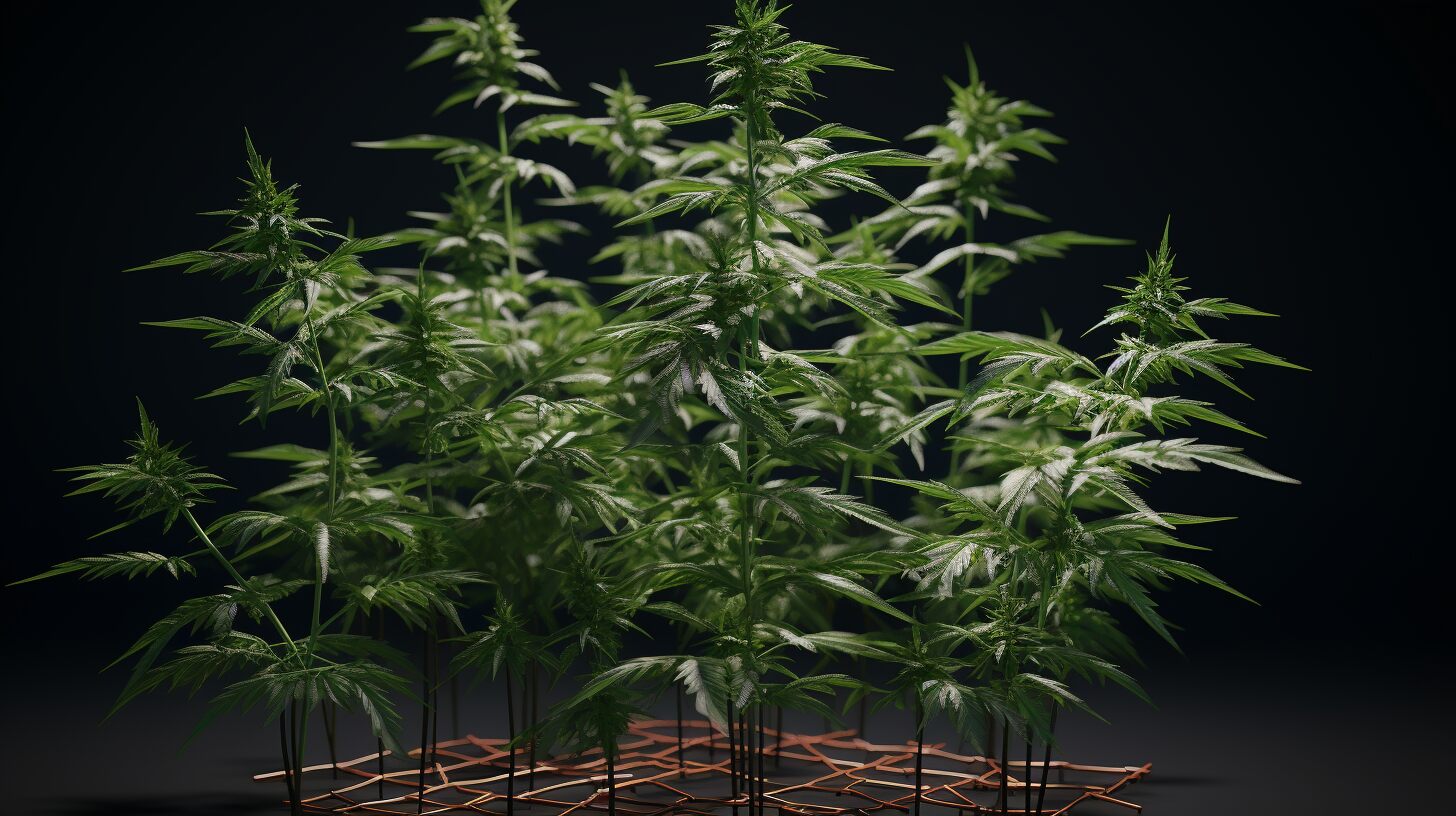Le mainlining du cannabis est une technique révolutionnaire dans le monde de la culture du cannabis, offrant des avantages remarquables tels que l'augmentation des rendements et la possibilité de façonner méticuleusement les plantes, ce qui est particulièrement avantageux dans les environnements à espace restreint.
Mieux encore, cette méthode, centrée sur la création d'un collecteur, est remarquablement simple à mettre en œuvre une fois familiarisée avec elle, ce qui en fait un choix parfait pour les cultivateurs de tous niveaux d'expérience. Si vous avez déjà entendu le terme mais que vous ne comprenez pas ou ne comprenez pas ses fonctionnalités et ses avantages, ne vous inquiétez pas.
Ce guide vous expliquera tout ce que vous devez savoir sur le cannabis principal, vous aidant ainsi à libérer tout son potentiel.
Comprendre le cannabis principal
Maintenir le cannabis, c'est comme donner à une plante un entraînement spécial pour qu'elle devienne grande et forte. Cette méthode garantit que chaque partie de la plante reçoit la bonne quantité de lumière et de nourriture. Cela commence par couper la jeune plante de manière à créer deux branches principales. Ces branches produiront d’énormes têtes plus tard.
L’utilisation de cette technique demande un certain travail, mais elle s’avère payante car vos plantes poussent uniformément. Chaque branche peut contenir des fleurs lourdes car elles ont toutes la même force. Pensez à un arbre avec de nombreuses petites branches plutôt qu'à un arbre avec quelques fortes branches : c'est ce que fait le mainlining pour vos plants de cannabis ! Cela les aide à mieux utiliser leur énergie, de sorte que vous vous retrouvez avec plus à récolter à la fin.
Équipement essentiel pour maintenir le cannabis
Obtenir les bons outils est essentiel pour réussir à intégrer le cannabis. Vous avez besoin d’un équipement qui soutient vos plantes et vous aide à les façonner correctement.
- Attaches de jardin douces : vous utiliserez ces attaches douces pour maintenir les branches sans les blesser. Ils aident à guider la croissance dans la direction que vous souhaitez.
- Sécateur ou ciseaux à pointe fine : des coupes nettes et nettes sont importantes. Ces outils vous permettent de retirer des parties de la plante facilement et rapidement sans dommage.
- Perforatrice ou couteau pointu : l’un ou l’autre fera des trous dans vos attaches souples. Ces trous maintiennent tout en place sur le bord du pot.
- Piquets d’ancrage : Ils font office de points fixes. Les piquets donnent quelque chose contre lequel vos attaches souples peuvent tirer lors du façonnage des branches.
Guide étape par étape pour maintenir le cannabis
Plongez dans la technique transformatrice du mainlining du cannabis avec notre guide complet, dévoilant les étapes complexes conçues pour exploiter le potentiel de votre plante pour une croissance équilibrée et des rendements abondants. Continuez à lire pour maîtriser cette méthode de culture révolutionnaire.
Préparation des pots
Choisissez les bons pots pour vos plants de cannabis. Les pots d'entraînement en tissu fonctionnent mieux. Ces pots spéciaux laissent les racines respirer et aident l’eau à se répartir uniformément. Assurez-vous que votre pot est suffisamment grand pour que votre plante pousse fort.
Remplissez le pot de votre choix avec une bonne terre qui se draine bien mais qui retient toujours l'humidité lorsque vous l'arrosez. Cela permet de garantir que l’eau que vous donnez à la plante est bien absorbée par les racines.
Première garniture
Coupez la tige principale de votre plante de cannabis au-dessus du troisième ou du quatrième nœud. C'est ce qu'on appelle la « garniture ». Cela fait pousser deux nouvelles pousses là où vous coupez. Ces nouvelles pousses se transformeront plus tard en grosses branches.
Assurez-vous d'utiliser des ciseaux propres et pointus pour ne pas blesser la plante.
L'étêtage aide votre plante à cesser de croître en hauteur et à commencer à s'élargir. Cela permet également à votre plante d'avoir plus de têtes au final. Après l’étêtage, laissez à votre cannabis le temps de se reposer et de redevenir fort avant de passer aux étapes suivantes.
Création d'un collecteur
Pour fabriquer un collecteur, vous façonnerez votre plante de cannabis en quelque chose comme un moyeu avec de nombreux bras. Cela signifie que vous coupez la tige principale et laissez la plante pousser deux grosses branches. Ces deux branches seront le début de votre collecteur.
Tout d’abord, attendez que votre plante ait environ 6 à 8 feuilles. Vous êtes maintenant prêt à tailler ou à couper le sommet de votre plante juste au-dessus de sa troisième série de feuilles. Assurez-vous d'utiliser des ciseaux ou des cisailles propres ! Après cette coupe, deux nouvelles pousses pousseront là où vous avez fait la coupe.
Laissez ces pousses devenir suffisamment longues pour qu'elles aient au moins trois séries de leurs propres feuilles.
À lire aussi : Tout ce dont vous avez besoin de savoir pour faire pousser votre cannabie dans une tente
Deuxième garniture et première formation
Une fois que votre plante de cannabis a repoussé après la première étêtage, il est temps de passer à la deuxième étêtage. Cela signifie couper le haut de chaque nouvelle branche principale. Vous voulez vous assurer de couper juste au-dessus d'un nœud où deux nouvelles pousses attendent de pousser.
Cela aidera votre plante à commencer à former une forme symétrique, idéale pour faire pousser de grosses têtes de cannabis.
Vient maintenant la première partie de la formation. Pliez et attachez doucement ces branches pour qu'elles soient étalées et plates comme une table. Cela aide toutes les parties de la plante à recevoir suffisamment de lumière et à pousser uniformément.
Avec cette méthode, connue sous le nom de technique du collecteur, vous donnez à votre cannabis des chances égales de développer des têtes fortes.
Dernière garniture et deuxième formation
À présent, votre plante de cannabis se porte bien. C'est l'heure de la dernière garniture. Cette étape est essentielle pour garantir que les huit branches deviennent fortes et uniformes. Coupez la nouvelle croissance au-dessus de votre troisième nœud sur chaque branche.
Assurez-vous de bien le couper ! Cela vous donnera ces huit têtes principales dont rêve tout cultivateur de cannabis.
Ensuite, entraînez ces branches avec soin ! Pliez-les doucement et attachez-les pour créer un auvent large et plat. Cela permet à la lumière de bien atteindre toutes les parties de la plante. Votre objectif ici est un grand et beau buisson sans taches hautes ou courtes – juste une croissance uniforme dans tous les domaines.
La patience porte ses fruits dans cette phase, alors prenez votre temps et regardez votre cannabis prendre forme en un chef-d'œuvre de symétrie et d'équilibre !
Première défoliation et taille
Vos plants de cannabis poussent fort et il est maintenant temps de leur donner une petite coupe de cheveux. C’est à ce moment-là que vous effectuez la première défoliation et la première taille. Vous voudrez retirer quelques feuilles pour laisser la lumière atteindre les branches inférieures.
Attention à ne pas trop couper ! Enlevez simplement les grandes feuilles qui bloquent le soleil des autres parties de votre plante.
La taille aide votre plante à se concentrer sur la formation de bourgeons là où vous le souhaitez. Trouvez les petites pousses en bas qui ne recevront pas beaucoup de lumière et coupez-les doucement. De cette façon, votre plante utilise son énergie pour les parties supérieures, ce qui entraîne une meilleure croissance là-haut.
Deuxième défoliation et taille
Maintenant que le premier cycle de défoliation et d’élagage est terminé, il est temps de passer au second. Cela se produit juste au début de la phase de floraison, du jour 1 au jour 21. Au cours de cette phase, vous enlèverez les feuilles et les branches supplémentaires qui pourraient empêcher la lumière et l'air d'atteindre les nouveaux bourgeons.
En faisant cela, vous vous assurez que chaque partie de votre plante de cannabis reçoit ce dont elle a besoin pour devenir forte.
Tailler signifie désormais plus que simplement enlever les feuilles ; il s'agit de façonner l'avenir de votre récolte. Vous visez une canopée avec une répartition uniforme de la lumière où toutes les têtes peuvent prospérer de la même manière.
Cette coupe minutieuse crée également des chemins pour une meilleure circulation de l'air entre les plantes - pensez au bonsaï, mais en gardant à l'esprit un jardin à plus haut rendement. N'oubliez pas d'être doux mais décisif ; chaque coupe détermine la manière dont votre cannabis développera ses précieuses têtes !
Défoliation finale et taille
La défoliation finale et la taille sont essentielles pour faire briller vos plants de cannabis. À mesure que vous approchez de la récolte, il est temps de retirer toutes les feuilles restantes qui bloquent la lumière ou qui ne semblent pas saines.
Cela aide la plante à se concentrer sur la croissance de têtes grosses et fortes. Vous voulez que chaque partie de votre plante reçoive une bonne lumière et un bon air.
Couper les feuilles supplémentaires garantit également que la plante utilise au mieux son énergie au cours de ces dernières semaines. Faites attention à ne pas trop couper, cependant – vous voulez seulement retirer ce qui est nécessaire pour que votre plante puisse mettre toute sa puissance dans ces précieuses têtes supérieures.
Avec une main experte, la défoliation finale et la taille vous préparent à une récolte exceptionnelle au moment de la récolte !
Avantages du cannabis Mainlining
Découvrez l'impact transformateur du mainlining sur vos plants de cannabis, car cette méthode inaugure une nouvelle ère de croissance robuste et de récoltes abondantes. Poursuivez votre lecture pour découvrir les secrets qui amélioreront votre niveau de culture du cannabis.
Améliorer le rendement
Maintenir le cannabis, c’est comme donner à vos plantes une feuille de route pour leur croissance. Vous les guidez pour produire des colas plus gros et juteux. Cette méthode configure votre plante de manière à ce que toute l’énergie se concentre sur la croissance des meilleures têtes au sommet.
Votre récolte est considérablement améliorée sans trop de travail supplémentaire.
Vous remarquerez que chaque cola semble plus pleine et plus forte car elle reçoit la même lumière du soleil et les mêmes nutriments. Le résultat? Un rendement de cannabis plus important avec des têtes de meilleure qualité remplies de cannabinoïdes.
Les jardiniers adorent cette technique car elle transforme leurs plantes en stars très performantes, prêtes à produire une récolte impressionnante.
À lire aussi : Les bienfaits des orties piquantes sur les plants de cannabis
Absorption efficace des nutriments
Maintenir le cannabis que vous cultivez, c’est comme lui donner un pass VIP pour la nourriture et l’eau. Cela aide vos plantes à obtenir exactement ce dont elles ont besoin pour devenir grandes et fortes. Considérez cela comme la création d’une autoroute allant des racines jusqu’aux feuilles.
Cela garantit que tous les bienfaits de l'eau et des nutriments vont directement là où ils sont le plus nécessaires.
Les plantes bénéficiant de ce traitement spécial utilisent moins d’eau tout en obtenant plus de nourriture – plutôt sympa, non ? De plus, faire les choses de cette façon vous permet de devenir intelligent et respectueux de notre planète. Vous verrez des tiges plus fortes et plus de têtes prêtes à être récoltées !
À lire aussi : Qu'est-ce qu'une plante avec tête et une plante sans tête
Meilleure exposition à la lumière
Obtenir de la lumière sur toutes les parties de votre plante de cannabis peut être difficile. Mais avec le mainlining, vous donnez à votre plante la forme dont elle a besoin pour capter plus de lumière du soleil ou faire pousser des lumières. Cela signifie que tous les bourgeons reçoivent une juste part de lumière, ce qui est extrêmement important pour leur bonne croissance.
Pensez à la façon dont les plantes aiment bronzer. Mainlining garantit que chaque site de têtes donne l'impression de se trouver sur sa propre plage ensoleillée. Vous verrez moins de petites têtes aérées en bas car elles ne sont plus laissées à l'ombre.
Au lieu de cela, votre cannabis aura des têtes grosses et fortes qui absorbent beaucoup de lumière pour une meilleure croissance et plus de cannabinoïdes.
À lire aussi : Quelle est la différence entre le SOG et le ScrOG ?
Trucs et astuces pour un mainlining réussi
Maintenir votre cannabis peut conduire à des plantes plus grandes et meilleures. Suivez ces conseils pour vous guider sur la voie du succès.
- Commencez le mainlining lorsque votre usine comporte six nœuds. Cela lui donne suffisamment de croissance pour gérer le stress.
- Utilisez des ciseaux propres et pointus pour couper. Cela évite les dommages et les éventuelles maladies.
- Entraînez doucement les branches. Pliez-les lentement pour éviter de les casser.
- Donnez aux plantes le temps de guérir après la coupe. Attendez une semaine ou deux avant la prochaine étape.
- Surveillez les signes de stress dans vos plantes. Les feuilles jaunes ou une croissance lente peuvent signifier qu’elles ont besoin d’une pause.
- Gardez un auvent uniforme pour l’exposition à la lumière. Coupez les branches trop hautes ou trop larges.
- Use ties that don't harm the plant stems. Soft ties work well without cutting into the plant.
- Sois patient! Les bonnes choses prennent du temps, alors laissez vos plantes pousser à leur rythme.
- Vérifiez souvent les parasites et les maladies. Une action rapide peut sauver toute votre récolte.
- Discutez avec d’autres producteurs de leurs expériences. Vous pourriez apprendre de nouvelles astuces !
Mainlining par rapport à d’autres techniques d’entraînement à stress élevé
Le maintien du cannabis est une approche ciblée pour gérer la structure des plantes pour une croissance équilibrée et des rendements optimisés, mais ce n'est pas la seule technique d'entraînement à fort stress dans l'arsenal d'un cultivateur.
Comprendre comment cela se compare à des méthodes telles que le super cropping ou le palissage à faible stress peut permettre aux producteurs de faire les meilleurs choix en fonction du potentiel de leurs plantes.
Super recadrage
Le super cropping est un moyen de faire pousser vos plants de cannabis comme vous le souhaitez. Vous pliez et pincez doucement les branches, les rendant plus épaisses et plus solides. Cela aide la plante à contenir plus de têtes.
Lorsque vous effectuez un super recadrage, vous faites attention à ne pas casser la peau de la branche. La plante guérit ensuite, créant une « articulation » capable de supporter plus de poids.
L’utilisation du super cropping avec mainlining prépare vos plantes à de grosses récoltes. Vous façonnez chaque branche pour qu’elles reçoivent toutes suffisamment de lumière et d’air. En gérant l'endroit où pousse chaque partie, chaque partie de la plante fonctionne mieux pour produire des fleurs ou des fruits.
C'est comme dire à votre cannabis exactement comment être le meilleur de lui-même !
Entraînement Low-Stress
Le palissage à faible stress, ou LST, est une manière plus douce d'aider vos plants de cannabis à pousser largement et uniformément. Vous pliez soigneusement les tiges et les attachez, en les guidant pour qu’elles s’étalent. Cela permet à toutes les parties de la plante de mieux bénéficier de la lumière.
C'est comme donner à chaque feuille sa propre place au soleil ! L'ensemble de la verrière reste plat et reçoit exactement ce dont il a besoin.
Considérez le LST comme une approche aimable qui ne choque pas vos plantes. C'est idéal pour les débutants car c'est moins risqué que de couper ou de casser des branches. Avec un peu de ficelle et de patience, vous pouvez entraîner vos plantes à prospérer sans trop de tracas.
De plus, cette méthode peut conduire à plus de têtes au final !
Expérience personnelle
J’ai d’abord essayé le mainlining sur un petit lot de plants de cannabis pour voir la différence que cela pouvait faire. Il était clair que lorsque j’utilisais cette technique, mes plantes avaient des branches solides prêtes à supporter de lourdes têtes.
Les rendements étaient également impressionnants, chaque plante ayant de grosses et grosses têtes au lieu de petites. Chaque matin devenait excitant lorsque j'entrais dans ma salle de culture et que je constatais à quel point la croissance était uniforme et symétrique.
Façonner ces plants de cannabis a demandé de la patience et du soin, mais cela a payé. Avec une taille soignée, chaque plante a reçu plus de lumière et de circulation d'air autour des têtes. Cela les rendait en meilleure santé et moins susceptibles de tomber malade ou d’avoir des problèmes d’insectes.
De plus, toutes les parties de la plante bénéficiant d’une bonne lumière, elles sont devenues plus fortes de haut en bas – pas de points faibles ! C'est formidable de savoir que ces méthodes peuvent aider d'autres cultivateurs à améliorer la qualité et la taille de leurs propres récoltes.
Conclusion
Après avoir partagé mon propre parcours avec le cannabis mainlin, il est clair que cette méthode a du punch pour les cultivateurs. Avec les bons outils et les bonnes étapes, vous pouvez entraîner vos plantes à produire de grosses têtes uniformes.
N'oubliez pas que la patience et l'attention sont essentielles. Continuez à pratiquer ces techniques et vous verrez votre travail acharné porter ses fruits par une récolte abondante. Bonne croissance !
FAQs
Qu’est-ce qui est important dans la culture du cannabis ?
Le mainlining est une technique dans laquelle vous entraînez la plante de cannabis à pousser avec une distribution d'énergie égale pour de meilleurs rendements.
À quel moment dois-je commencer à entretenir ma plante de cannabis ?
Commencez à entretenir votre plante de cannabis après qu'elle ait développé 4 à 6 nœuds, ce qui prend généralement quelques semaines à partir du semis.
Le mainlining peut-il augmenter mon rendement global en cannabis ?
Oui, le mainlining peut augmenter votre rendement en créant plus de sites de têtes et une canopée uniforme.
Y a-t-il un type de terre particulier dont j’ai besoin pour la culture principale des plantes de cannabis ?
Aucun type de sol spécifique ; utilisez simplement un sol bien drainé et riche en nutriments, idéal pour une croissance régulière du cannabis.
La taille du pot affecte-t-elle la façon dont je dois aborder le mainlining ?
Un pot spacieux aide à donner de l'espace pour les racines, ce qui soutient la croissance structurée qui accompagne la ligne principale.


 English
English 





